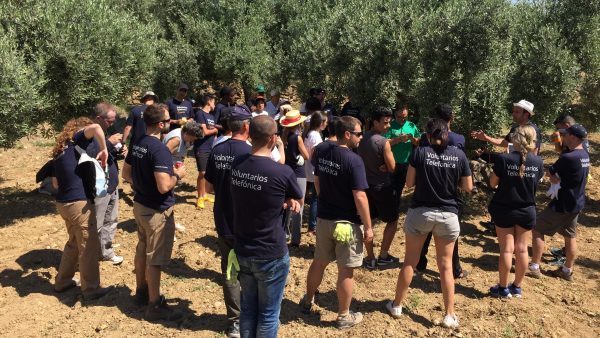The technological context
In a digitalised world, information security has become a critical priority. The advent of quantum computing, with its potential both to solve problems that are currently intractable and to break current cryptographic systems, has set alarm bells ringing across all sectors.
Algorithms such as RSA and ECC, widely used to encrypt data, could be vulnerable to quantum attacks in the future. To anticipate this risk, post-quantum algorithms, resistant to quantum computers, and crypto-agility strategies, which allow encryption systems to be updated flexibly, are being developed.
In addition, quantum technologies are present in
- Quantum sensors: Measurement with unprecedented accuracy, key in industry and science.
- Quantum simulation: Modelling complex systems with applications in multiple disciplines.
- Post-quantum cryptography: Quantum-safe cryptography for the internet of the future
Telefónica has been working on these and other aspects of quantum technologies for some time, developing a technological infrastructure called Quantum Safe Networks, which combines classic cryptography with post-quantum algorithms standardised by NIST. This solution is designed to be easily integrated into existing infrastructures without the need to replace hardware.
Use cases and real applications
Health
In collaboration with the Vithas hospital group, Telefónica has deployed an advanced quantum network to protect sensitive medical data. This pilot test, carried out in Madrid, uses post-quantum algorithms and secure links to guarantee the confidentiality of clinical information.
Operational flow
- Hospital use cases. Various everyday scenarios were tested, all involving sensitive information: from the transfer of files containing critical information and monitoring of vital signs between hospitals to teleconsultation sessions via videoconferencing.
- Use of quantum key distribution to secure communications. Quantum key distribution (QKD) is used to generate secure keys that are impossible to intercept without being detected, making it the most secure system known today against attacks using any type of computing.
- Secure transmission via Telefónica’s secure network. In this scenario, data travels through an encrypted network on Telefónica’s communications services, such as MacroLAN or VPN/IP, whose keys have been transmitted by the QKD system, making them impossible to intercept.
Industry and IoT
Telefónica, together with IDEMIA and Quside, has launched a Quantum Safe connectivity solution for industrial IoT devices. This technology protects sensors and devices without the need to change hardware, using TLS protocols reinforced with quantum randomness.
Operating flow
- Cryptographic keys are generated using a quantum random number generator (QRNG), ensuring maximum entropy and security.
- These keys are integrated into industrial eSIMs with post-quantum cryptography algorithms, resistant to attacks from quantum computers.
- The mobile connectivity of IoT devices is managed, enabling cryptoagility (remote algorithm updates) and monitoring security.
- Data travels encrypted from the device to the cloud, where it can be analysed without compromising its integrity or confidentiality.
Private 5G networks
At Mobile World Congress 2025, Telefónica presented a demo of private 5G networks with post-quantum encryption. These networks are designed for critical environments such as factories, ports and energy infrastructure.
Operational flow
- Connected devices (IoT, mobile phones). Sensors, cameras, industrial mobile phones, etc. connect to the network.
- Private 5G network (Telefónica infrastructure). Provides dedicated connectivity, low latency and high security.
- Post-quantum encryption. Data is protected with algorithms that are resistant to attacks from quantum computers.
- Secure network management. Telefónica monitors and manages the network with advanced security tools.
- Cloud/Data centre. Encrypted data is transmitted for analysis, storage or visualisation.
Smart devices
One of the most striking cases was the integration of Quantum Safe into Halotech smart helmets, connected via the Kite platform. These devices, used in industrial environments, can receive remote updates of cryptographic algorithms.
Operational flow
- The smart helmet collects data from the environment and the user.
- The quantum-secure eSIM encrypts the data using quantum-safe algorithms.
- The Kite platform manages the mobile connection and ensures that the encryption is kept up to date.
- The data is securely transmitted to the cloud, where it can be analysed in real time.
Conclusions
Quantum computing represents both an opportunity and a challenge. While it promises revolutionary advances, it also jeopardises the security of current systems.










